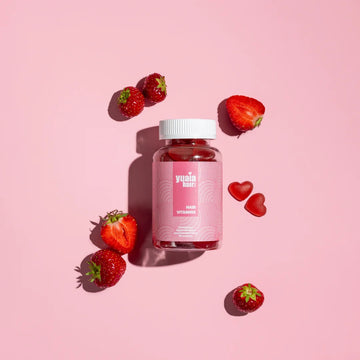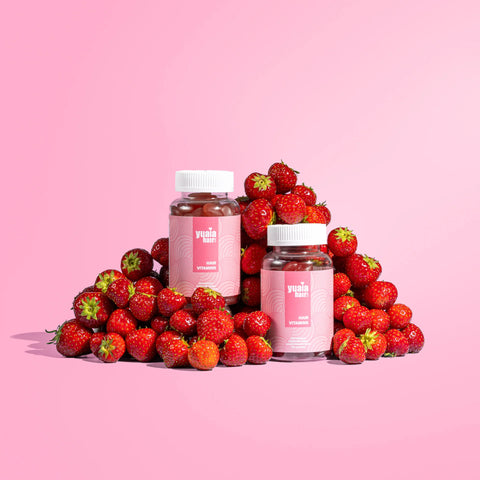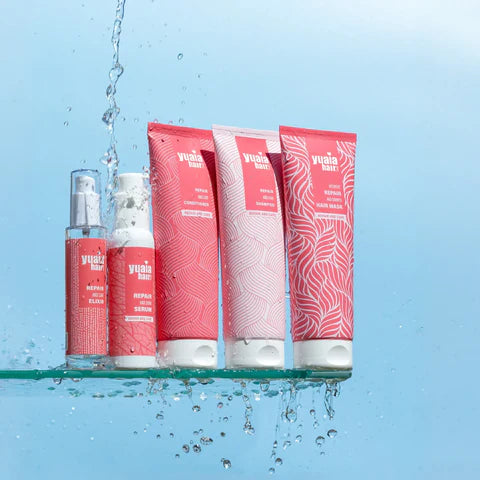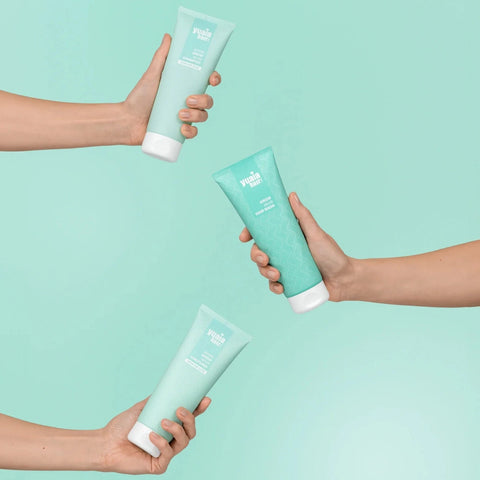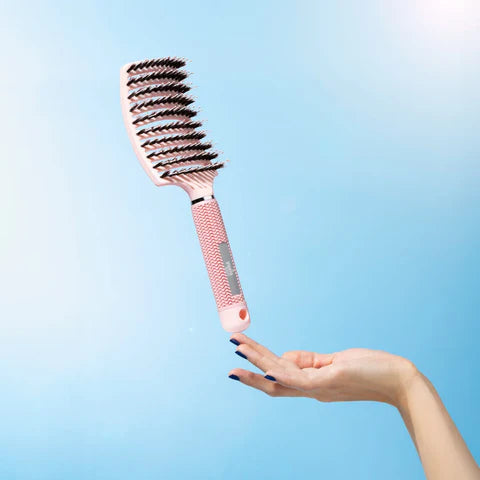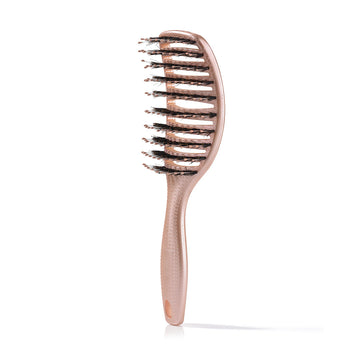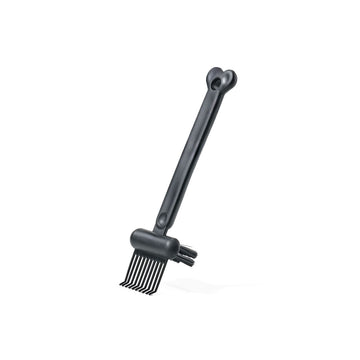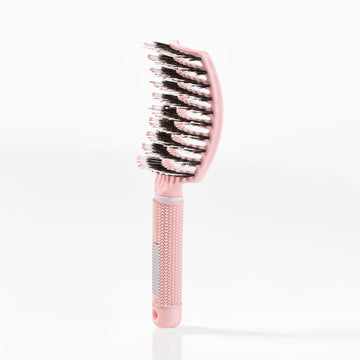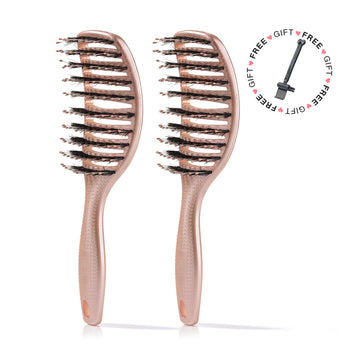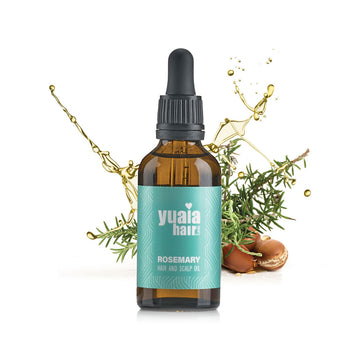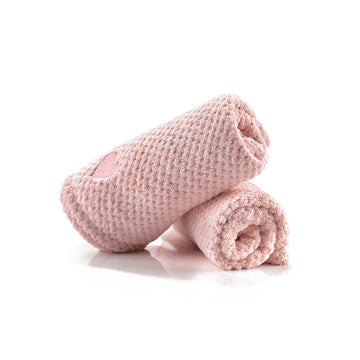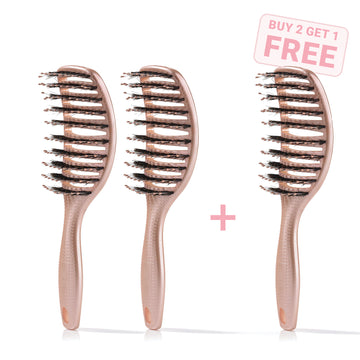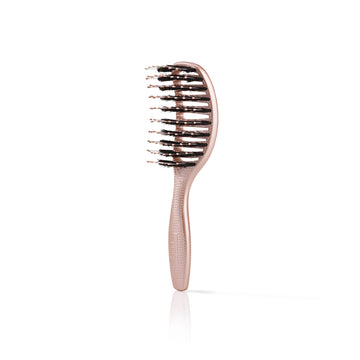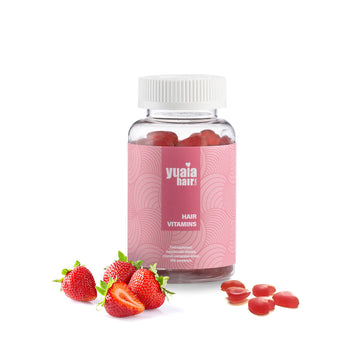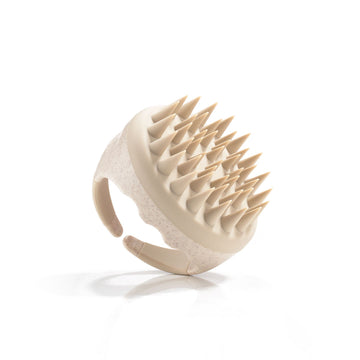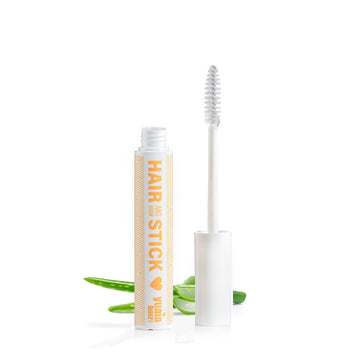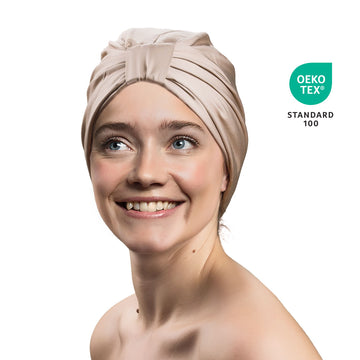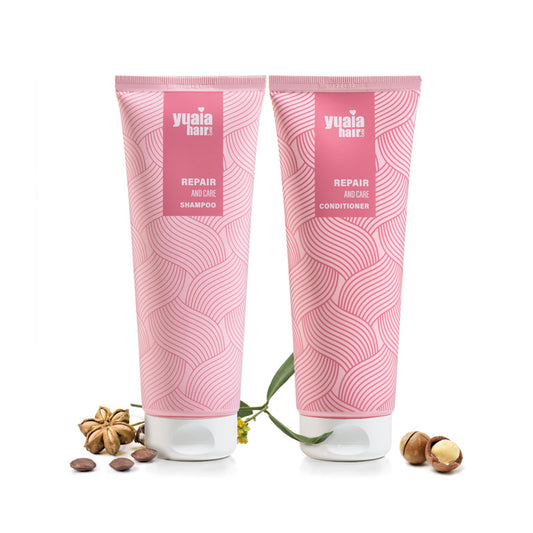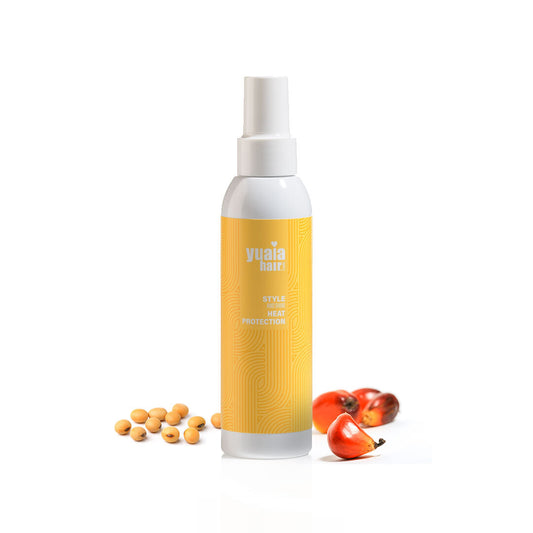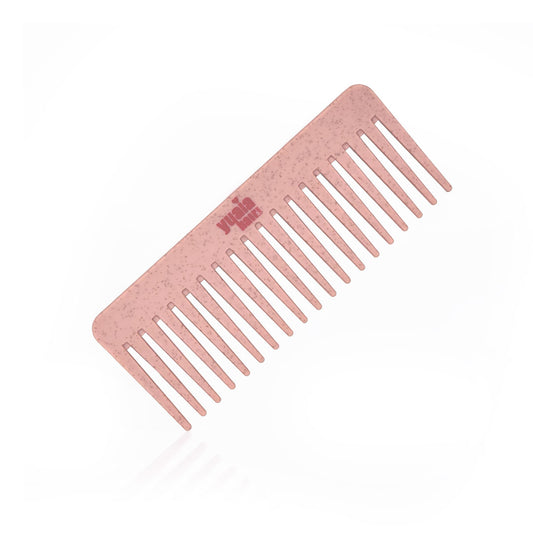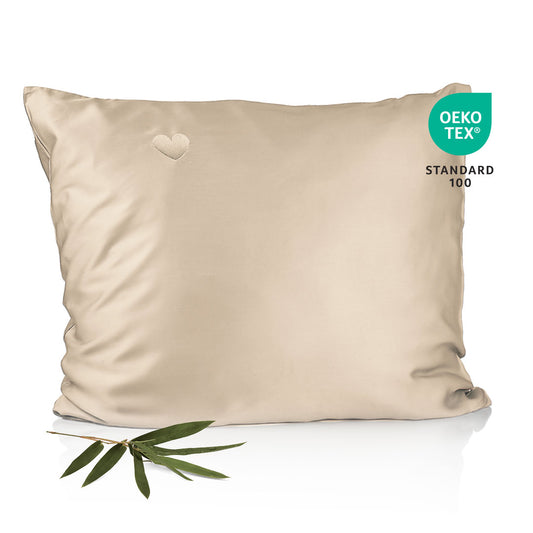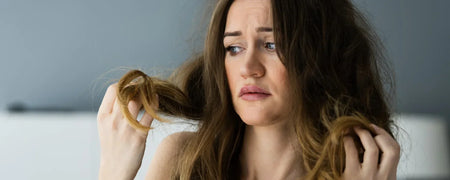
Why is my hair so dry and brittle? Common causes
Dry and brittle hair is a common concern that can affect everyone regardless of hair type or length. Understanding the root causes is essential to restoring hair health and achieving a softer, more resilient texture.
In this section, we explore the most frequent reasons behind dry and fragile hair, helping you identify what might be impacting your strands and how to address it effectively.
Chemical treatments
Treatments such as coloring, bleaching and perming can damage the hair, stripping it of natural oils and weakening its structure.
These chemical treatments alter the physical and chemical makeup of the hair, making it more porous and less resilient. When done frequently or improperly, they can lead to cumulative damage, causing the hair to become increasingly fragile over time. The harsh ingredients used in these treatments often disrupt the natural protective layer of the hair, which leads to increased moisture loss and diminished elasticity.
Without the natural oils that coat and protect each strand, the hair is left exposed and prone to split ends, breakage, and a dull appearance.
Heat styling
Frequent use of heat tools like blow dryers, flat irons, and curling wands can damage hair by breaking down proteins and removing vital moisture. These devices can weaken the hair’s natural structure, leaving it dry and fragile.
Without proper protection, daily heat styling can lead to frizz, split ends, and dullness. To reduce damage, limit the use of hot tools, use lower heat settings, and apply a heat protectant before styling.
Tight hairstyles
Wearing tight braids, ponytails, or buns can stress the hair and lead to breakage over time. Constant tension may weaken the hair and cause thinning or even hair loss. Tight accessories also increase friction, which can worsen dryness and split ends. To reduce damage, vary your hairstyles and avoid excessive tightness.
Inadequate hair care
Improper brushing, over-washing, or using harsh shampoos and conditioners can exacerbate dryness and fragility. Brushing hair too aggressively, especially when wet, can lead to unnecessary breakage and weaken the structure of each strand.
Likewise, washing hair too frequently strips away natural oils that are essential for moisture retention, leaving the scalp and hair more vulnerable to dryness. Harsh shampoos and conditioners—particularly those with sulfates, parabens, or alcohols—can further disrupt the hair’s balance, causing long-term damage.
Environmental factors
Prolonged exposure to sunlight, strong winds, saltwater, and chlorinated pools can significantly dehydrate the hair by lifting the cuticle and stripping away its natural oils. This leaves the hair vulnerable, causing it to become dry and frizzy, and prone to breakage and split ends. The protective outer layer weakens, leading to long-term damage and diminished shine.
To minimize these adverse effects, it is advisable to shield hair using hats, scarves, or UV-protective hair products.
Product usage
Using the wrong hair products, especially those containing harsh ingredients like sulfates, parabens, or alcohol, can strip the hair of its natural oils and essential hydration. These substances not only cleanse the scalp aggressively but also remove the protective sebum layer that helps to lock in moisture and maintain elasticity. Over time, this leads to increased dryness, brittleness, and susceptibility to breakage.
Additionally, some styling products with high alcohol content can evaporate moisture quickly, further depleting hydration levels. Repeated use of such products can result in long-term damage and an unbalanced scalp environment.
How to fix brittle hair
Once you've identified the underlying causes of brittle hair, the next step is to implement a routine to restore its strength and moisture. Fixing brittle hair requires a comprehensive approach that includes proper hair care, protective habits and sometimes medical guidance.
Below are methods that can help you repair and prevent brittle hair over time.
Cleanse and condition with moisture in mind
To support healthier, more resilient hair, it’s essential to adopt a cleansing routine that prioritizes moisture retention. Begin by using gentle, sulfate-free shampoos that clean without stripping away the hair’s natural oils—an especially important consideration for brittle hair prone to dryness. Follow with a deeply hydrating conditioner, focusing on the mid-lengths and ends to replenish moisture, enhance softness, and boost elasticity.
Equally important is avoiding over-washing, which can disrupt the scalp’s oil balance and leave hair feeling dry and fragile. Tailor your washing frequency to your hair type and lifestyle to help maintain optimal hydration and long-term manageability.
Detangle with care
Proper detangling is key to avoiding breakage and stress on your hair. Use a wide-tooth comb and always begin at the ends, gently working your way up toward the roots. This technique reduces tension on the hair shaft and prevents unnecessary pulling that can cause fragile strands to snap. It's especially important after washing, when hair is more vulnerable. A mindful approach to detangling helps maintain the hair’s natural strength and supports long-term resilience.
Use leave-in products for daily protection
A leave-in conditioner and lightweight oils are excellent for maintaining hydration and improving hair manageability throughout the day. They create a protective barrier that locks in moisture while shielding hair from environmental stressors like sun, wind, and humidity. These products also guard against heat damage and friction from brushing or pillowcases, helping to reduce breakage and dryness.
When applied to damp hair, they ease detangling and leave hair feeling softer and smoother. With options suited to all hair types, regular use of leave-in treatments can significantly enhance your hair’s texture, resilience, and overall health.
Protective measures
To maintain healthy, hydrated hair, doing daily protective measures is essential—especially if you frequently use heat styling tools. Always apply a heat protectant before blow-drying, straightening, or curling. These products form a barrier around the hair shaft, minimizing moisture loss and protecting against protein degradation caused by high temperatures.
Beyond styling, consider your nighttime routine. Traditional cotton pillowcases can cause friction that leads to breakage, frizz, and moisture depletion. Switching to bamboo pillowcases provides a smoother surface, reducing friction and helping the hair retain natural oils. To further prevent damage while you sleep, loosely secure your hair in a braid or a soft bun. This minimizes tangling and mechanical stress, especially for longer or fragile hair.
Combining these practices creates a gentler environment for your hair, helping preserve its strength, elasticity, and overall appearance over time.
Medical consultation
If brittle hair persists despite proper care, consult a healthcare professional to check for underlying issues like hormonal imbalances, thyroid disorders, or nutrient deficiencies. A medical evaluation can guide targeted treatments, such as supplements or dietary changes, to address internal causes and improve hair health.
Best shampoo and conditioner for dry, brittle hair
Our Repair and Care shampoo and conditioner are gentle, sulfate- and silicone-free products, ideal for dry and damaged hair.
The shampoo features Gluadin® WLM Benz, a wheat protein that reduces hair damage by over 80% and strengthens the hair from within. The conditioner includes Rep’Hair®, proven to reduce split ends by 43% and boost shine by 22%.
Additional nourishing ingredients such as inca inchi oil, aloe vera, jojoba oil, and shea butter provide deep moisture, combat frizz, and protect hair color. Neossance Hemisqualane further reduces frizz by 29% and enhances color protection by 30%.
This duo is especially beneficial for dry, chemically treated, or fragile hair in need of restoration, softness, and shine.
How to prevent brittle hair
Preventing brittle hair is just as important as treating it. By having the right habits and using appropriate protective methods, you can significantly reduce the risk of dryness, breakage, and long-term damage. Below are a few practical ways to help maintain healthy, resilient hair.
Regular maintenance
Regular maintenance is essential for keeping your hair strong and healthy. Trimming your hair every six to eight weeks helps prevent split ends from traveling up the shaft, reducing the overall chance of breakage and maintaining a neat, polished look. Beyond the ends, caring for your scalp is just as important.
Using gentle shampoos, avoiding harsh scrubbing, and incorporating occasional scalp massages can stimulate blood circulation and support healthier hair growth over time.
Together, these small but consistent practices form the foundation of a hair care routine that preserves length, enhances texture, and minimizes damage caused by neglect or environmental stressors.
Environmental protection
Protecting your hair from environmental stressors is a vital step in maintaining its health and softness. Prolonged sun exposure can lead to UV damage, which dries out the hair and weakens its structure. Wearing a hat or scarf when outdoors helps shield your hair from these harmful rays.
Similarly, after swimming in chlorinated pools or salty seawater, rinsing your hair thoroughly is crucial. Both chlorine and salt can strip the hair of its natural oils, leaving it dry, brittle, and prone to breakage. Adopting these simple protective habits consistently helps retain moisture, enhances resilience, and preserves your hair’s natural vitality.
Product selection
Choose products that are specifically formulated for your hair type, whether it's fine, curly, thick, or color-treated, to ensure they address your individual needs.
It's especially important to avoid products with harsh chemicals such as sulfates, parabens, and alcohols, as these can strip your hair of its natural oils and cause long-term damage.
Instead, look for nourishing options that are rich in moisture or protein, depending on your hair’s condition. Moisturizing products help combat dryness and improve elasticity, while protein-rich formulas can strengthen weakened strands and reduce breakage. By selecting the right hair care products, you can proactively maintain the integrity and health of your hair over time.
Restoring strength and shine
Brittle hair doesn’t have to be a permanent struggle. By understanding the underlying causes and having a consistent, gentle hair care routine—complemented by the right products and lifestyle adjustments—you can restore vitality and resilience to your locks. Healthy, vibrant hair is within reach with the right knowledge and commitment.
Frequently Asked Questions
What causes hair to become brittle?
Brittle hair is often caused by a combination of factors such as excessive heat styling, chemical treatments, environmental exposure (like sun, wind, or chlorine), over-washing, and the use of harsh hair products. Nutritional deficiencies and certain health conditions can also contribute to hair becoming dry and fragile.
How can I restore moisture to my brittle hair?
To restore moisture, use a gentle, sulfate-free shampoo and a deeply hydrating conditioner. Incorporate leave-in conditioners or hair oils, avoid over-washing, and limit the use of heat styling tools. Regular deep conditioning treatments and protective hairstyles can also help lock in moisture.
Are there specific ingredients I should look for in products for brittle hair?
Yes, look for products containing moisturizing and nourishing ingredients such as aloe vera, shea butter, jojoba oil, wheat protein, and hemisqualane. Avoid products with sulfates, parabens, and high alcohol content, as these can strip hair of its natural oils and worsen brittleness.
Can diet affect the health of my hair?
Absolutely. A balanced diet rich in vitamins, minerals, and proteins supports healthy hair growth and strength. Deficiencies in nutrients like iron, zinc, vitamin D, and biotin can lead to brittle, weak hair. If you suspect a deficiency, consult a healthcare professional.
When should I see a doctor about brittle hair?
If your hair remains brittle despite proper care and lifestyle changes, or if you notice sudden hair loss or other symptoms, it's a good idea to consult a healthcare provider. Persistent brittle hair can sometimes signal underlying health issues such as thyroid disorders or hormonal imbalances.

 2-4 day UK delivery
2-4 day UK delivery
 25.000+ satisfied customers
25.000+ satisfied customers
 Satisfaction Guarantee
Satisfaction Guarantee



